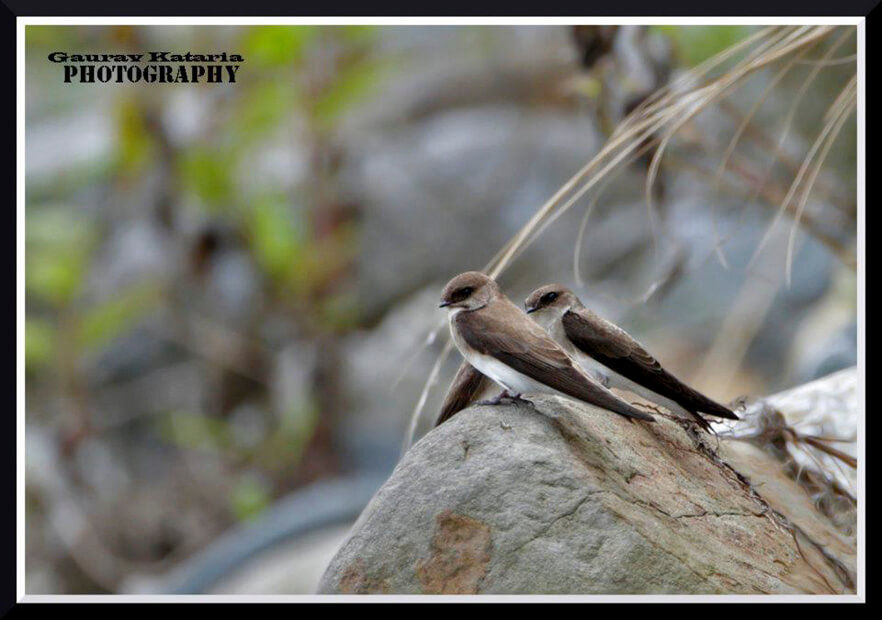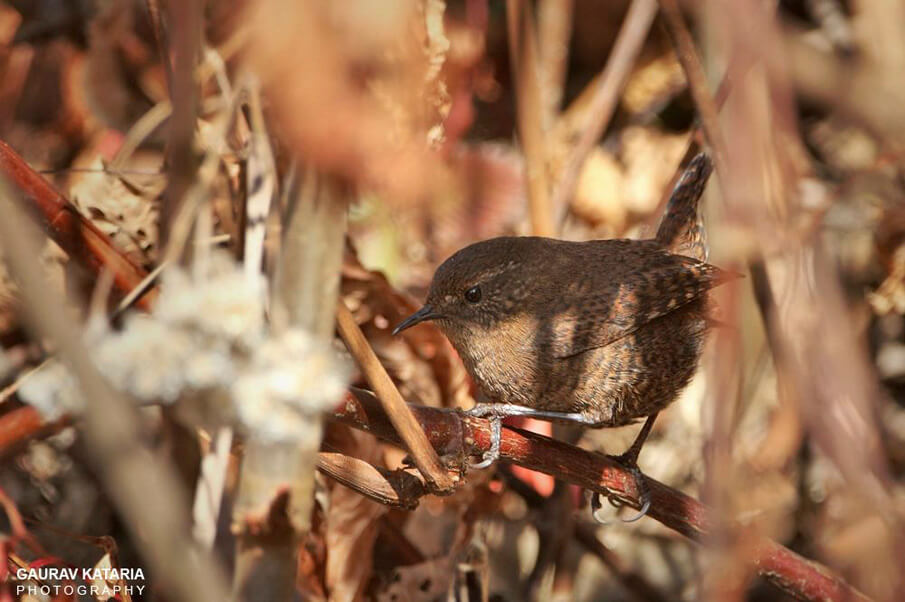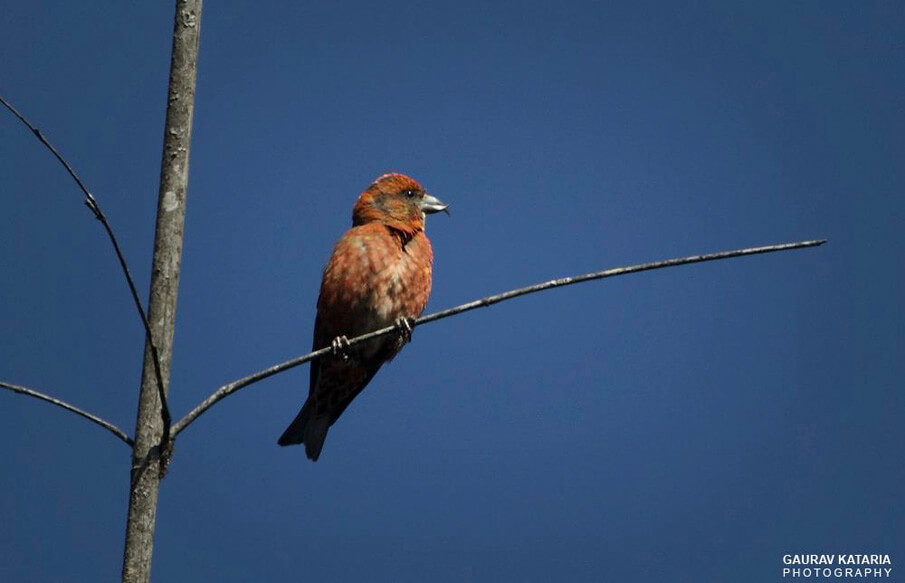Kochi - Thattekkad - Munnar - Ooty - Masinagudi - Kochi
09 Days / 08 Nights
Our Western Ghats Endemic Birding Tour adopts a two-pronged approach. Firstly, it targets the birds that are exclusive to Peninsular India. Secondly, it ticks off a lot of other avian specialities in the long checklist of South Indian birds. The geographical importance of the Western Ghats can’t be overstated.
Booked as per
request.
Included except arrival and departure city.

Private guide for complete tour.
Airport to Airport.
2-8PAX
Included
Our Western Ghats Endemic Birding Tour adopts a two-pronged approach. Firstly, it targets the birds that are exclusive to Peninsular India. Secondly, it ticks off a lot of other avian specialities in the long checklist of South Indian birds.
The geographical importance of the Western Ghats can’t be overstated. It’s a mountain range that runs along the western coast of Peninsular India and acts as a natural interceptor of the monsoon winds blowing in from the south west. Bountiful rain, perennial rivers and montane rain forests have made this region one of the best biodiversity hotspots in the world. Dozens of wildlife reserves, national parks, and sanctuaries in the Western Ghats host a wide variety of flora and fauna, particularly birds.
More than 500 species of birds have been spotted in the Western Ghats and at least 16 of them are endemic.
Our birding tour of the Western Ghats aims specifically at the endemics, and generally at all the resident and migratory birds of South India.
The endemic birds of Western Ghats we target include Wayanad Laughing Thrush, Malabar Grey Hornbill, Rufous Babbler, White-bellied Treepie, Black and Orange Flycatcher, Nilgiri Wood Pigeon, Nilgiri Pipit, White-bellied Blue Flycatcher, Blyth’s Starling, Crimson-backed Sunbird, Grey-headed Bulbul, Malabar Barbet, Malabar Lark, White-bellied Sholakili (Shortwing), White-cheeked Barbet, Flame-throated Bulbul, Yellow-browed Bulbul, and Nilgiri Sholakili (Shortwing).
The tour itinerary is drawn to cover the best birding trails of Western Ghats so that you get you see and photograph most, if not all, of these winged beauties in their natural surroundings.
Our Western Ghats birding trip takes off at Thattekkad Bird Sanctuary, which India’s most eminent ornithologist Salim Ali described as ‘the richest bird habitat in peninsular India’. The truth of this claim becomes clear in just a day of birding at Thattekkad Bird Sanctuary. Not only do you get to sight some endemics, but several interesting species such as Spot-bellied Eagle-Owl, Ceylon Frogmouth, Red Spurfowl, and a lot of flycatchers.
We commit three full birding days to Thattekkad, including a few stints of nocturnal birding to see nightjars and owls, before moving on to the next birding hotspot of south India, Munnar.
If Thattekkad is flat forestland, Munnar is a hilly haunt of a wide variety of birds. For two days, we comb the woods and grasslands here for the avian specialties of the Nilgiri Hills, namely Nilgiri Wood Pigeon, Nilgiri and Black and Orange Flycatchers, and Nilgiri Pipit, apart from many other birds of Peninsular India.
After Munnar, the tour winds towards the eastern slopes of the Western Ghats and into the thriving bird habitats of Chinnar forests, the hills of Ooty and the wildlife sanctuary of Mudumalai.
Over the years, INDIA BIRDING TOURS has thoroughly scoured the birdwatching hotspots of South India to design a dedicated nine-day tour targeting the endemic bird species of the Western Ghats. Some bird sightings come easy, others may demand persistence and legwork. But all in all, our Western Ghats Endemic Birdwatching Tour delivers lots of rare and interesting sightings, day in and day out.
Lodging: We aim to provide our guests more than just good and comfy accommodation with basic amenities and quality service. In the lodgings we pick for you, we look for character and locations that may enhance your South India birding experience. Throughout the Western Ghats birding trip, you get to stay at lodges and hotels that are either very close to the birding locations, or within the sanctuaries themselves, so that all you have to do is peek out the window to see an odd avian beauty.
Meals: We don’t take lightly the matter of your meals. The hotels and lodges you stay in have both Indian and Western food on the menu. You may be a vegetarian or a meat lover, there is always something to whet and satisfy your appetite. On the rare occasions when we camp out and overnight in tents, our kitchen staff takes charge and cooks simple but delicious meals without compromising on hygiene standards. On full birding days, we have packed lunches in the field.
Tour Difficulty: Anyone fit enough to walk long distances while carrying along personal birding equipment such as binoculars, camera, field guide and backpack can do our Western Ghats Endemic Birdwatching Trip. The tour starts off easy in the flat forests of Thattekkad, but then progresses to the hilly terrain of Munnar and Ooty. Even in the hilly areas, the birding trails are mostly gentle slopes. A full day of birding starts in the morning and ends around dusk. At times, we continue birding well into the night. You should be able to cope with these long birding hours, with rest breaks in between, of course.
Tour Extension: South India has plenty of recreational opportunities to choose from. You may want to explore Kerala’s famous backwaters on a houseboat, go on a cycling trip in Cardamom Hills, visit the tea plantations, check into an Ayurveda resort, crave for a seaside holiday, or do safari rides in the wilderness of Mudumalai National Park. Be our guest. We can add any of these tour extensions to make your South India birding holiday more exciting. Let us know well in advance the tour extension you would like, so that we can make the necessary arrangements.
Climate: The six-month winter period, starting from October and lasting till March, is the best time to do our birding expedition of the Western Ghats. The summer monsoon blows over by October and the region’s flora and fauna comes alive with renewed vigour. Birds are out and about in large numbers, particularly the migratory ones. The weather is very pleasant and the early mornings and late evenings may have a little cold nip in the air. Summer clothes would do fine, but you may want to pack in a light jumper or a raincoat as well.
The coastal town of Kochi in Kerala is ideally placed to begin our tour. You arrive in Kochi and our driver or tour guide picks you up at the airport and drives you to Thattekkad. It’s an approximately 70-km journey and takes no longer than 2 hours by cab.
We check into a pre-booked resort at Thattekkad around noon and, after a short lunch and resting break, we commence birding for the day. Thattekkad easily tops among the best birding hotspots of South India. We have purposely placed it at the start of our itinerary so that you, coming fresh into the tour, get to make the most of the first four days of birding in the Western Ghats. We begin the afternoon birding by exploring the areas around the resort, and, if time permits, we may even venture deeper into the Thattekkad Bird Sanctuary, which is home to about 322 species of birds.
The good thing about Thattekkad is that it has plenty of opportunity for night birding as well. So, the birders greedy for more hours in the field can actually squeeze in some nocturnal birding at the day’s tail end. Dinner and overnight at the resort.
Thattekkad Bird Sanctuary is a low-land forest spread out over an area of 25 square kilometres between the two branches of Kerala’s longest river, the Periyar. It is the oldest bird sanctuary in Kerala and to this day it remains the best place to see several endemic and migratory birds of the Western Ghats. That’s the reason for three back-to-back full days of birdwatching at Thattekkad Bird Sanctuary.
Going by our experience of covering Thattekkad over many years, these three days are usually chockful of bird sightings. Chief among the most sighted birds here are Spot-bellied Eagle-Owl, Ceylon Frogmouth, Red Spurfowl, Rufous Babbler, Brown-breasted Flycatcher, White-bellied Flycatcher, Blue-tailed Flycatcher, Rusty-tailed Flycatcher, Blue-bearded Bee-eater, Malabar Grey Hornbill, White-bellied Woodpecker, Heart-spotted Woodpecker, White-bellied Treepie and Malabar Trogon. Among more elusive birds are Grey-headed Bulbul and Wayanad Laughing Thrush, but birding trails at Urulanthanni at the far end of the bird sanctuary throws up a few prized sightings of these two beauties.
At night, we probe the woods for Nightjars, Frogmouths and Owls, who are not few in number. For three days we follow this busy birding routine, but on each day, we explore different stretches and birding trails to thoroughly cover the Thattekkad Bird Sanctuary. Lunches are picnics and dinners are buffets at the resort.
After an early breakfast, we drive for about two hours to Munnar, located 65km from Thattekkad. The drive takes us deep into the mountains of the Western Ghats. Munnar, a popular hill station and a tourist hotspot, sits at the height of around 1600 meters above mean sea level and is carpeted with lush green tea plantations that lend a surreally beautiful quality to its landscape.
This landscape is also a thriving habitat for many birds of the Western Ghats, which can be sighted at some of the wildlife sanctuaries and national parks surrounding Munnar, namely Eravikulam National Park, Anamudi Shola National Park, and Pampadum Shola National Park. Sholas are naturally occurring dense patches of montane forest that are separated by grassy areas. These woods and grasslands around Munnar abound with interesting bird species, including Nilgiri Wood Pigeon, Nilgiri Flycatcher, Black and Orange Flycatcher, Grey-breasted Laughing Thrush, White-bellied Shortwing, Nilgiri Pipit, Painted Bushquail and many more. Besides, we do repeat sighting of several birds found in Thattekkad, so we can always improve upon our photographic shots of these avian wonders.
We follow this birding routine in and around Munnar for two days. Again, lunches are picnics. Dinner and overnight at hotel or resort in Munnar.
We leave Munnar for Ooty in the morning. It’s a long drive of more than 200 km through the everchanging mountainous terrain, including the rain-shadow regions of the Western Ghats. These regions lie on the eastern slopes of the mountains and don’t see as much rainfall as the western slopes. In one such region called Chinnar, we stop by to do a few hours of birding.
Chinnar Wildlife Sanctuary is situated between the Western Ghats and the Deccan Plateau. The thorny scrub forest and grasslands of this sanctuary are habitat of about 150 species of birds from 40 families. Here we may see the likes of Large Grey Babbler, White-bellied Woodpecker, White-naped Woodpecker, Lessor White-throat, Jerdon's Baza, Rain Quail, Blue-breasted Quail, Speckled Piculet, Blue-bearded Bee-eater, Sirkeer Malkoha, Oriental Scops Owl, Black Baza, White-rumped Shama, Streak-throated Swallow and Grey-breasted Laughing Thrush.
After a satisfying stint of birding in Chinnar, we continue our cab ride to Ooty, where we arrive by evening or night and check into a hotel for dinner and overnight.
OOTY is our first pit-stop in the state of Tamil Nadu. It is a hill station located at the elevation of 2240 meters and its gorgeous setting in the Nilgiri Hills draws tourists in droves. We start our morning by doing a bit of birding around Ooty and then we pack up and leave for Masinagudi, about 30 km away.
Masinagudi is known for its lush forests and is part of the Mudumalai National Park which is a wildlife sanctuary and a tiger reserve. We spend most of our afternoon birding at Mudumalai National Park.
Our targets for Mudumalai are the national bird Peacock, Brown Dove, Spotted Babbler, Green Pigeons, Grey Jungle Fowl, Red Spurfowl, White-cheeked Barbet, Malabar Whistling Thrush, Malabar Grey Hornbill, Bulbuls, Mynahs, Grey Goggle-eyed Plower, Partridges, Quails, Large Racket-tailed Drongo, Magpie Robin, and several others. We also keep our eye out for the birds of prey, such as Eagles, Hawks, Buzzards, Harriers, Falcons and King Vulture. And late in the evening, we walk about to look for night jars and owls. Dinner and overnight at Masinagudi.
This is the final day of our Western Ghats endemic birding expedition. We make the most of it with early morning birding around Masinagudi. Then we pack up and drive you to Coimbatore or Kochi airport for your further journey. The tour ends.


